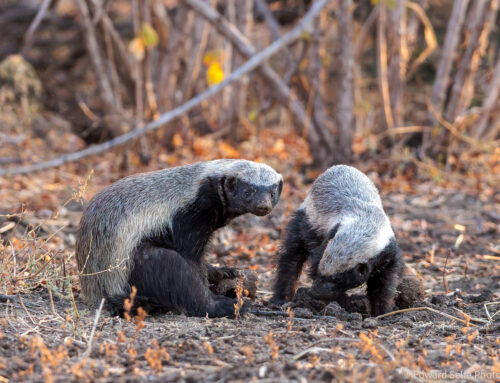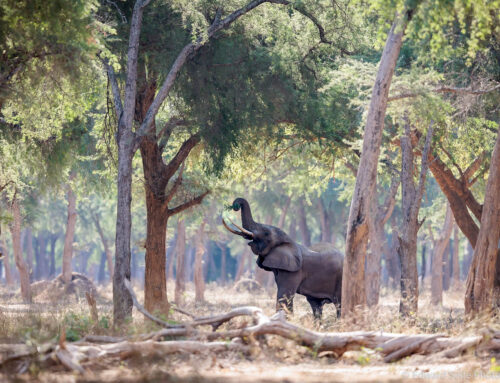The Ellingsens had been talking with me about safari for a couple of years by the time they arrived in Zambia. We had discussed a number of options and settled on a 10 night safari in August at two superb camps. This set up gives us time to explore each area properly, taking time to sit at likely elephant river crossings, pursue distant alarm calls that might lead to predators and to benefit from the element of luck that is required in all encounters with Nature!
Our first early morning drive took us across the river and into the National Park; Kafunta is well-placed just outside the National Park but with a private crossing that allows us very early and quick access to the park. This year, the river is too low for their pontoon crossing so we used a sandbagged bridge to drive through the water….quite a memorable way to start each outing into the bush!
Arriving on the other side of the river, I immediately noticed that all the antelope were very alert and looking in one direction. There were no alarm calls – usually associated with feline predators – and soon after a herd of impala burst through the treeline running towards us. These signs are strongly indicative of hunting hyaenas or wild dogs. Seeing either on the first morning would be a thrill, so we followed the signs and tracked down a large pack of 13 dogs resting, playing and socialising on the river bank. It was a cool morning, and the youngsters had the leg of an impala to play with so the interactions and play continued for nearly an hour!!
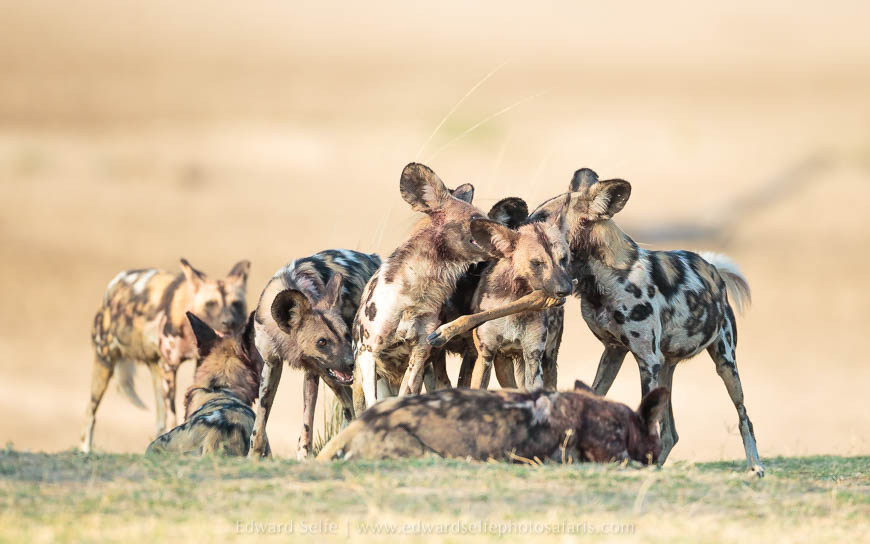
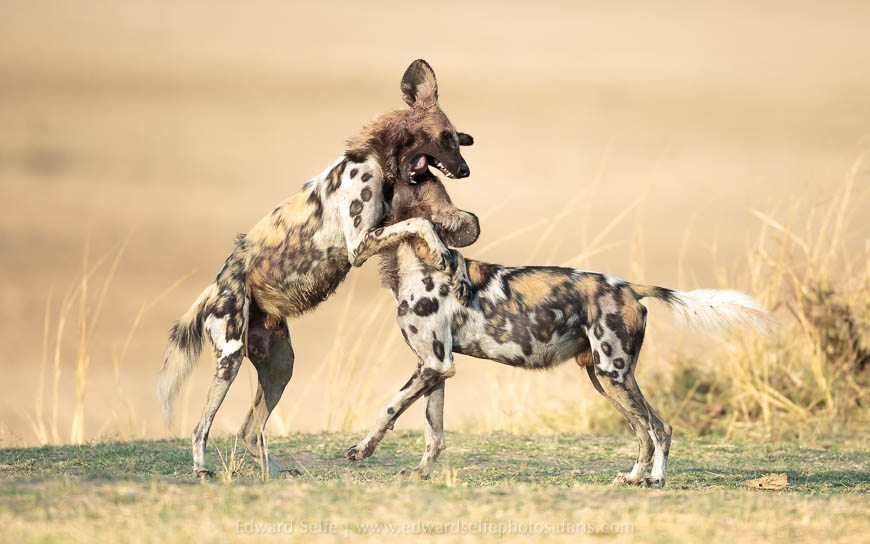
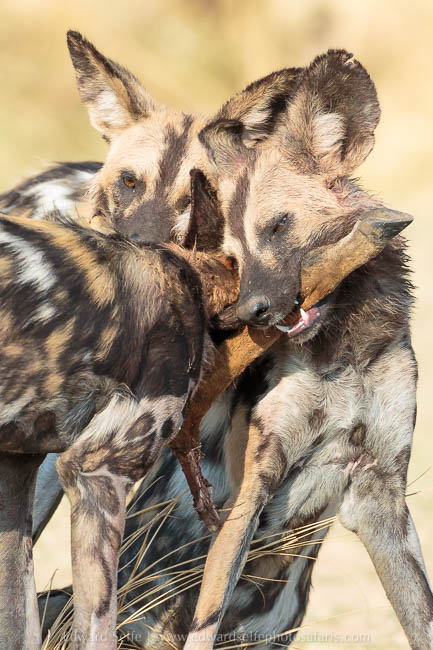
We spent the best part of the morning with the pack, watching as they alternately played, rested and rolled in the nearby sand. It was the most sustained and energetic bout of wild dog socialisation that I have seen in 10 years here. A great start to the trip.
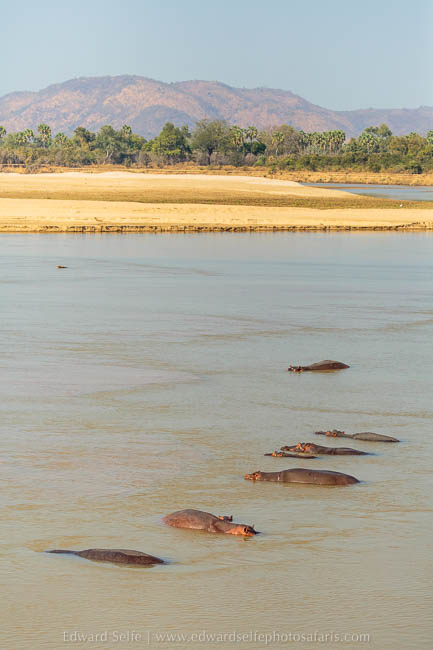
Coffee break at the Luangwa River gave us the chance to photograph some hippos with the Chindeni hills as backdrop.
After their successful kill in the morning, we knew that the wild dogs would not be active in the afternoon so we headed there late and hoped for a dusk hunt. But they were quite lazy and we’d had such a great sighting in the morning that we decided to move on. It was the right decision as we followed a herd of elephants to the river bank and watched as they crossed over towards Kafunta in the richest golden sunshine. As the light fell, I noticed a group of puku who were focused on a thicket and we found our first leopard of the tour; as with many of my guests, that had been top of the list for this family. As it turned out, we had 15 sightings of 9 different leopards over the trip, but day 1 had been a cracker!
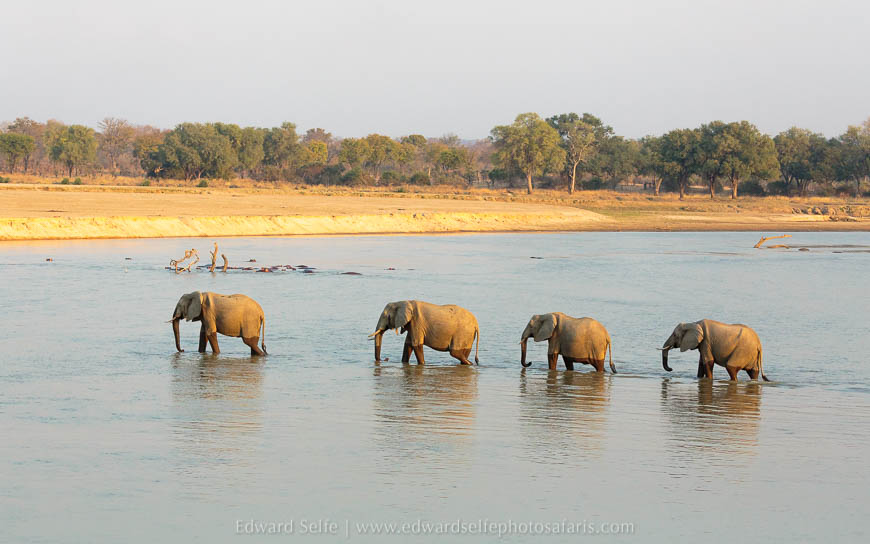
Day 2 started well with a giraffe river crossing; it’s always fun to watch as they cautiously pick a route through the deeper sections. Late in the morning, we found the same pack of wild dogs once again, but they were sleeping flat-out so we left them to their dreams. We spent the last part of the morning looking for a leopard that the antelope had spotted in the thickets. We didn’t find it but, returning in the afternoon, we tracked it down to a picturesque sausage tree where he was lazing away the hot afternoon. We were experiencing an unseasonably hot spell with temperatures reaching 38 one afternoon, so the leopard was happy to enjoy the breeze in the higher branches.
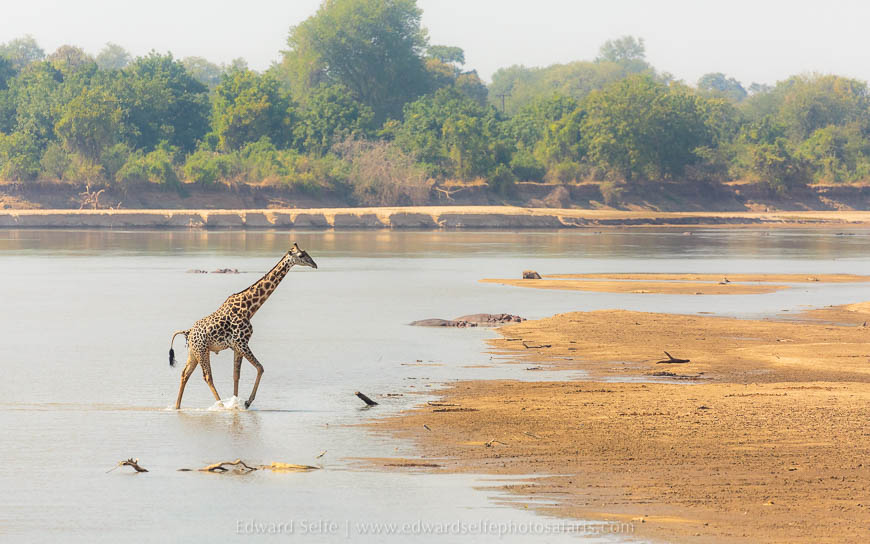
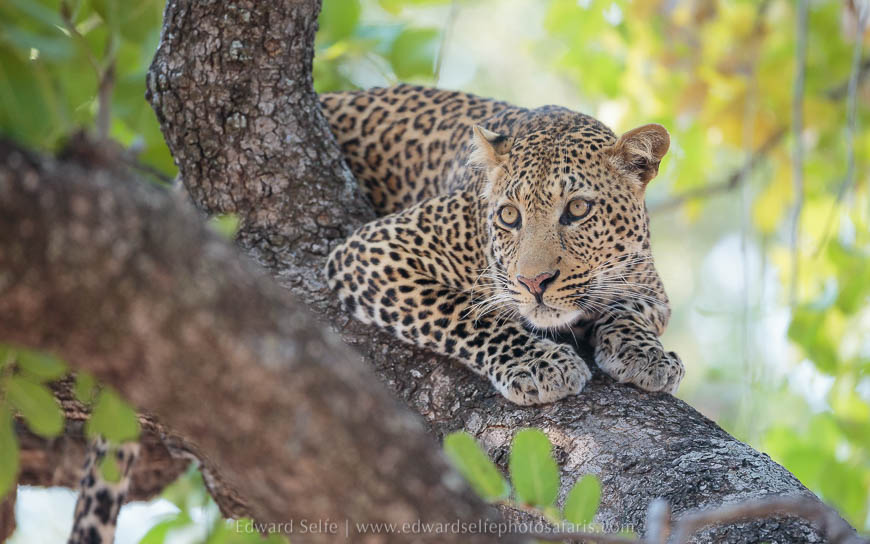
We moved on to where we had left the dogs, hoping that they would hunt and spotted another leopard on route! She scent marked a couple of trees and rubbed her cheek on existing marks before settling down in the grass.
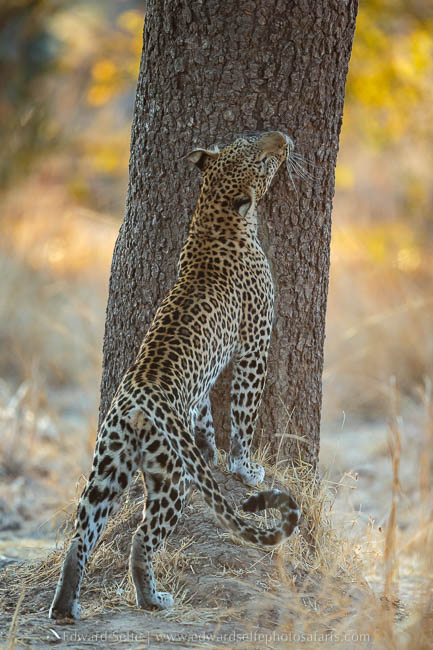
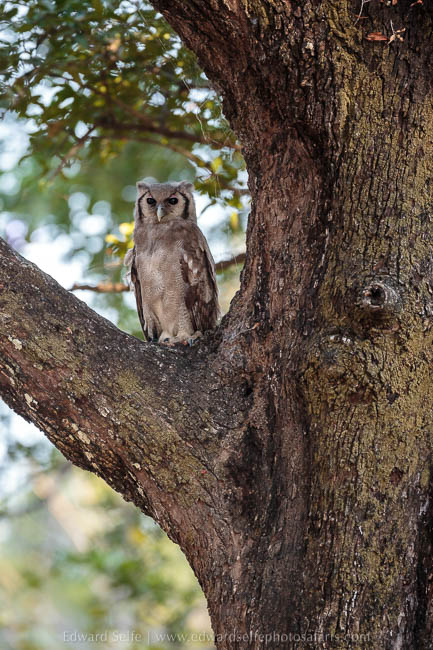
A giant eagle owl delayed us further in our quest to catch up with the dogs….but it was worth it to see this lovely predator by day.
The dogs were much more active than the night before, greeting, playing and watching for prey. We knew they would hunt but with the nearly-full moon, it might not be until dark. However, we enjoyed their attempts to terrorise a warthog!
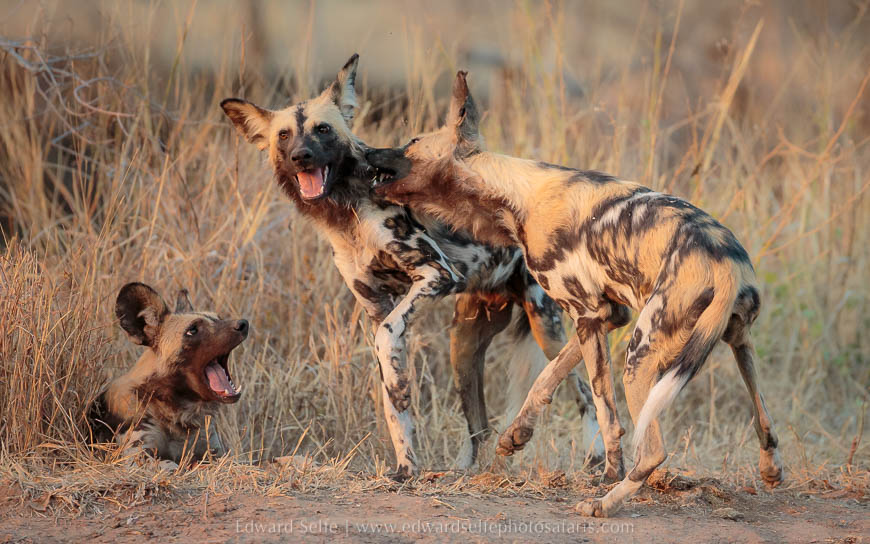
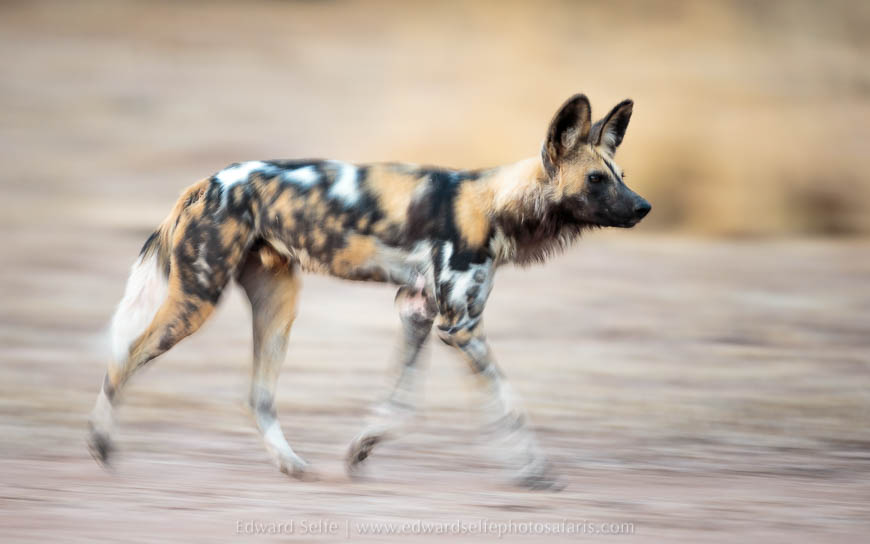
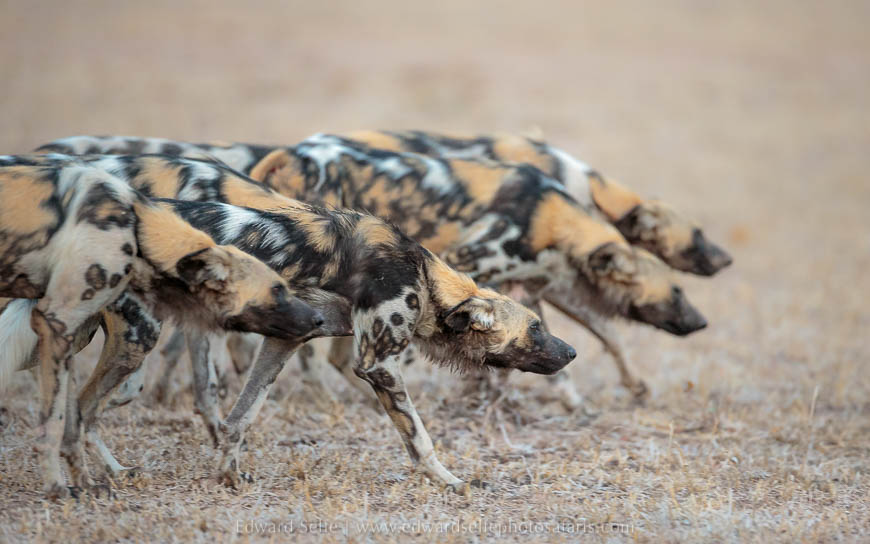
In the twilight, we watched as the pack surrounded and taunted a trio of buffalo bulls, scattering them in all directions, before we headed back to camp.
Day 3 started as all days should start, with a very early morning leopard sighting. It’s a thrill to find one very early since there is always a chance of following it through the morning and enjoying a number of different scenarios. This female was busily patrolling her territory, calling and scent marking and in fact it was hard to keep up with her, us using our winding roads and she taking the direct bush-routes! As always, we gambled on her direction and positioned for shots when she approached us over a ridge, even if it didn’t always work out, rather than just trailing her and getting photos of her walking away.
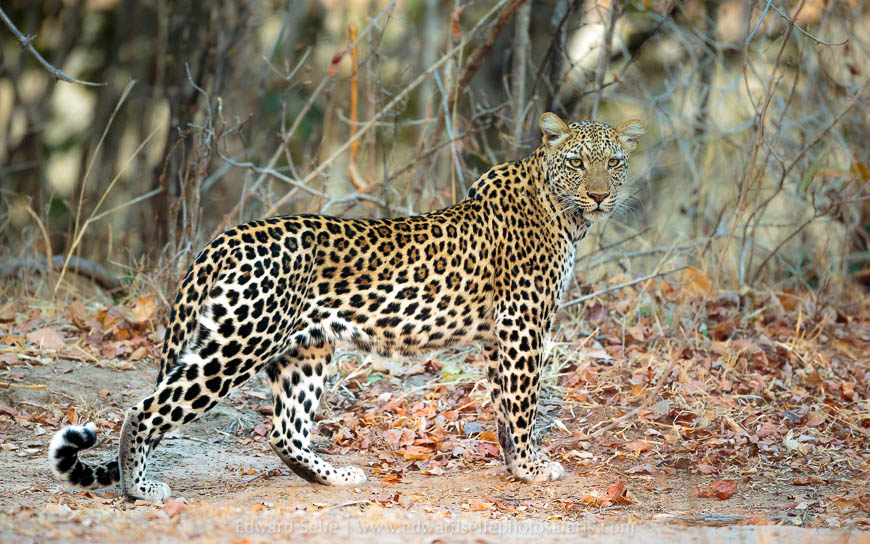
The morning ended with a stunning elephant scene, with the chance to place a tiny elephant in huge surroundings. After lunch we took the stunning road that leads through cathedral Mopane forest towards the Kakumbi salt pans. We went in search of crowned cranes but there were few to be found on this occasion, so we settled for the (not at all second best!) option of shooting scenic landscapes among the stunning trees.
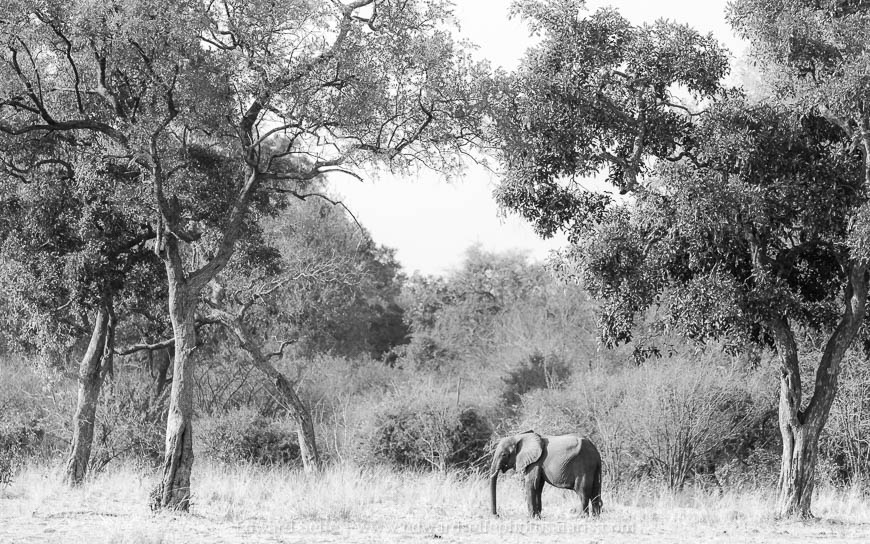
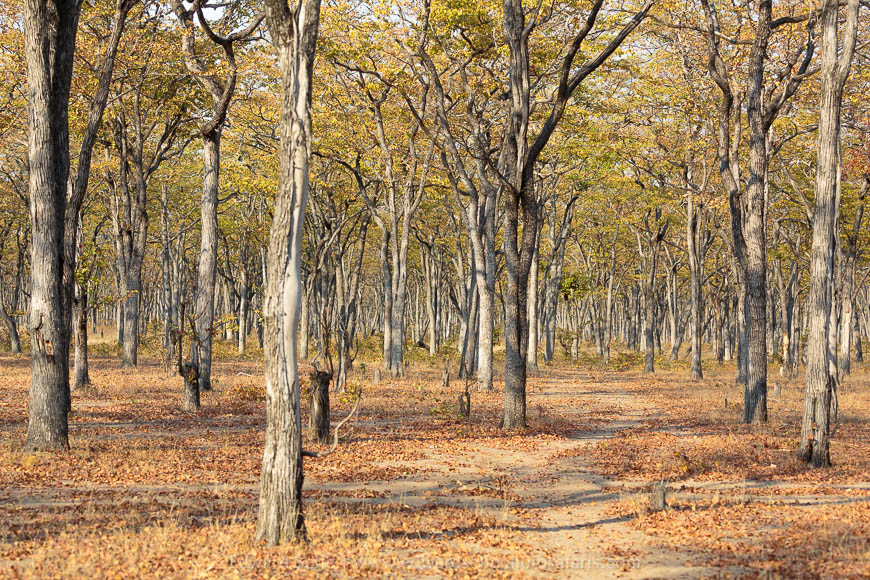
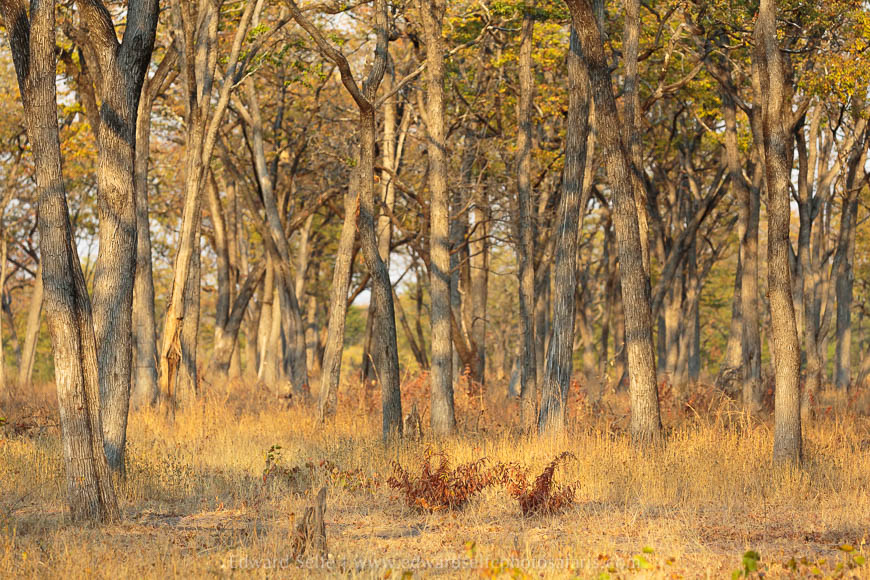
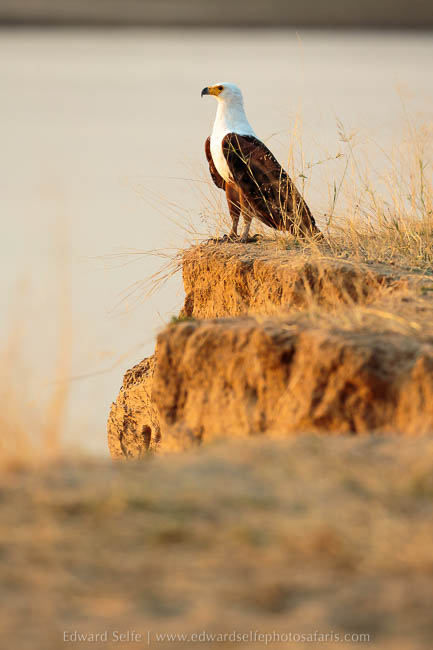
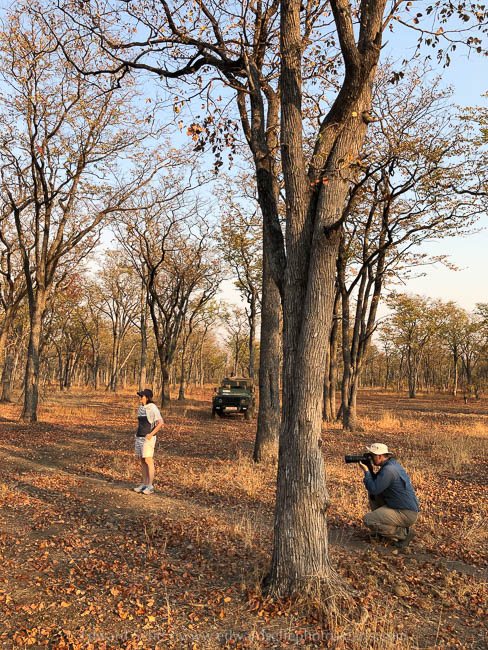
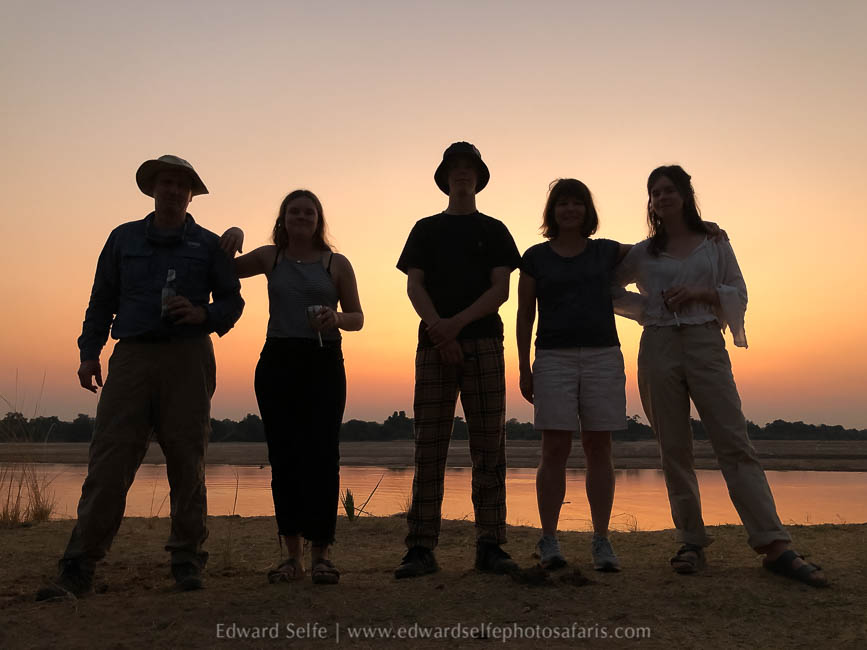
We ended that day with a superb sunset along the river and shots of hippos and people against the pink sky!
As always, we started out very early the following morning, entering the park at the opening time long before the sun has risen. We had a busy morning exploring new areas; this gave us waterbirds feeding at a small lagoon, a small pride of lions hunting antelope in the grassland, sparring giraffes and reflective impalas drinking at coffee-break.
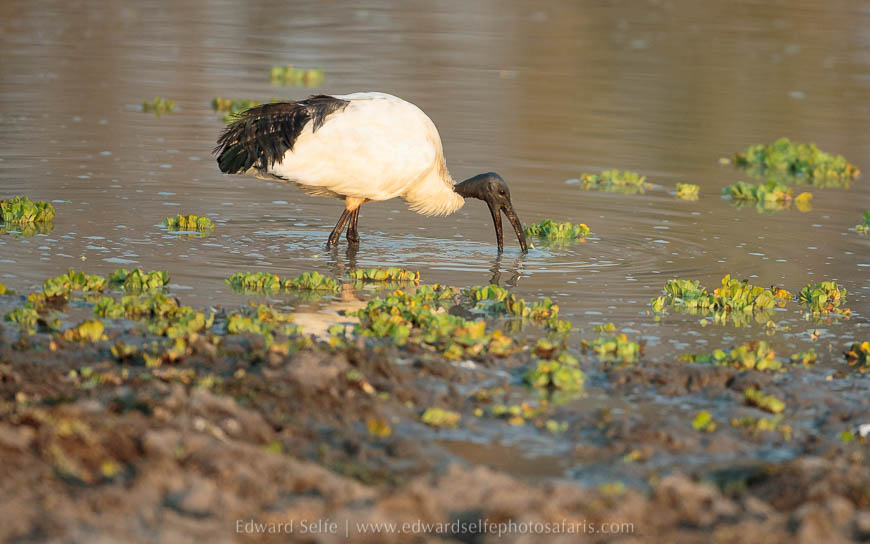
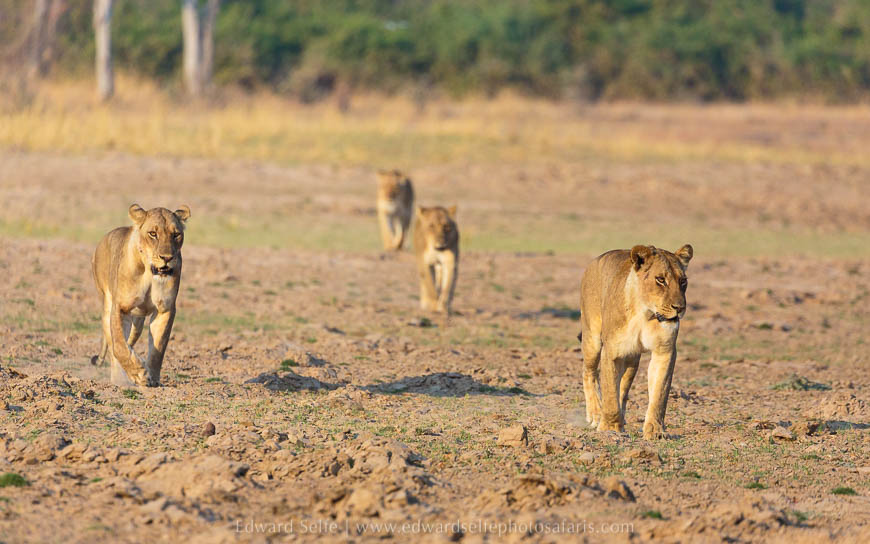
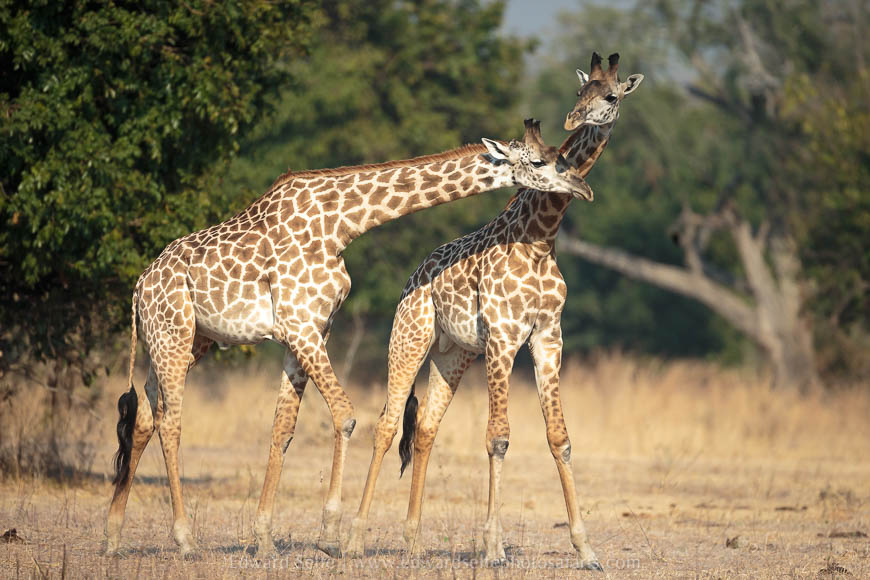
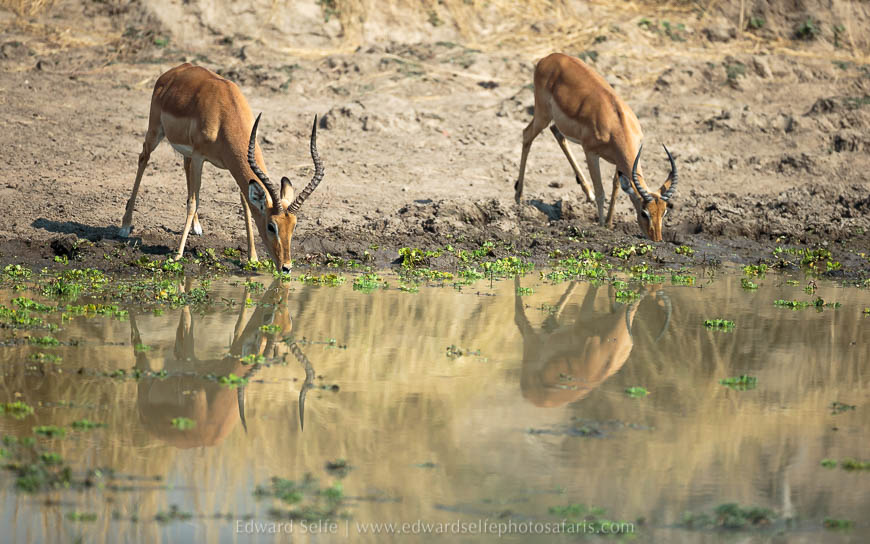
We had a wonderful final afternoon at Kafunta with stunning elephants both in the river and also on the floodplain along the riverbank.
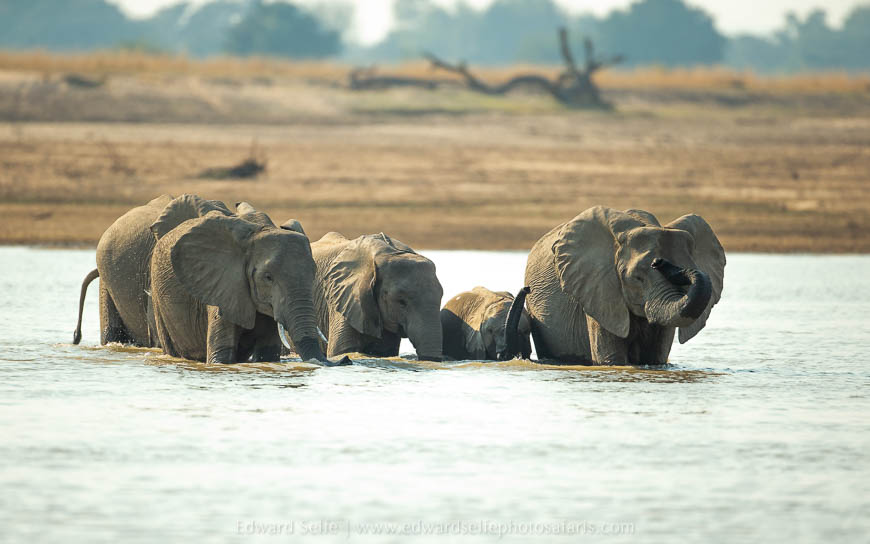
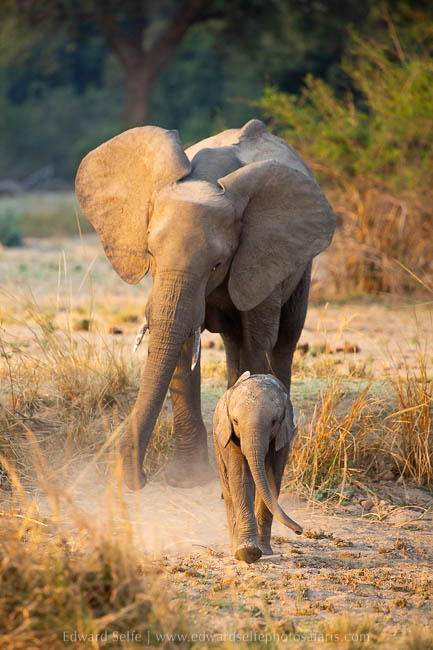
We decided to take a short morning drive on the day that we transferred to Lion Camp, so that we made the best of the morning light but didn’t have to travel to Lion Camp in the hottest part of the day. It turned out to be a very good idea! As I do very many times on each safari drive, I stopped the engine to listen to the sounds of the bush, and immediately caught the noise of monkeys alarm calling around 2kms away. I knew the trees where they roost so I headed there assuming they hadn’t moved far so early in the morning….as we arrived, we could hear antelopes calling as well, and I assumed that a leopard was moving along the drainage channel near the floodplain. In fact, it was one better because the leopard had killed an impala a few moments before and was dragging it through the bush towards us! We found a place to wait and watched as she dragged the heavy carcass towards us and up to a large tree! Exhausted, she started to feed, ensuring that she got a meal at least before any other scavengers could come and take the prize. After a short time feeding, she picked up the carcass and in one movement, dragged it 6m vertically up a mahogany tree! The tree had no low branches so she was using brute strength and the grip of her claws. The angle and the light were against us, so we had no photos to show for it, but we simply watched in awe as she hauled the impala – which weighs more than she does – vertically up the tree. There was little that we could do to top that, so we moved out and left her to feed in peace! Thank you Kafunta for a fabulous 5 days!
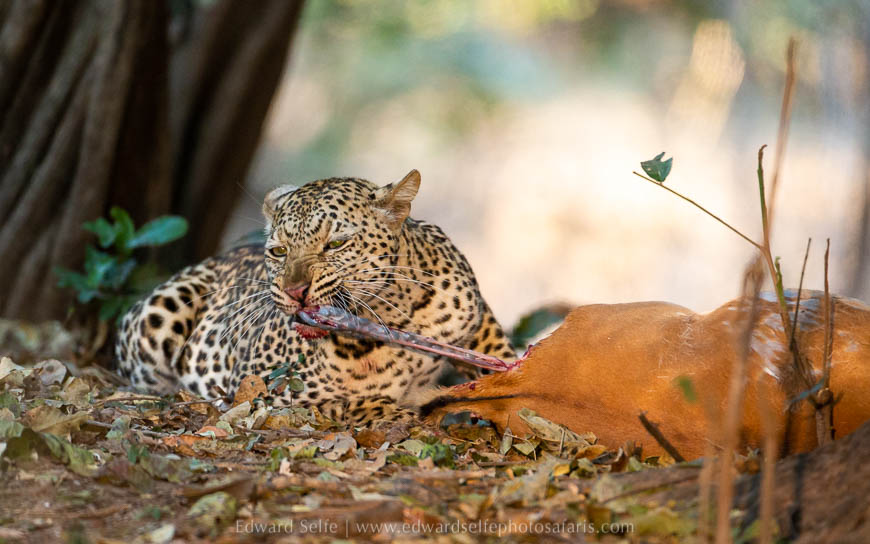
Arriving at Lion Camp is always a treat; all the camps in Luangwa are special but Lion Camp has a view, a setting and a feeling of promise that I find very exciting. We started our first afternoon drive and, as always, my guests could see immediately why I had recommended the area. Warthogs were feeding in the grassland, baboons were playing on a fallen tree nearby and the light was superb. Cackling guinea-fowl led us to our first Lion Camp leopard, the famous Chipadzuwa, and though she was not in an amazing position for photos, it was thrilling to encounter so much on the first outing.
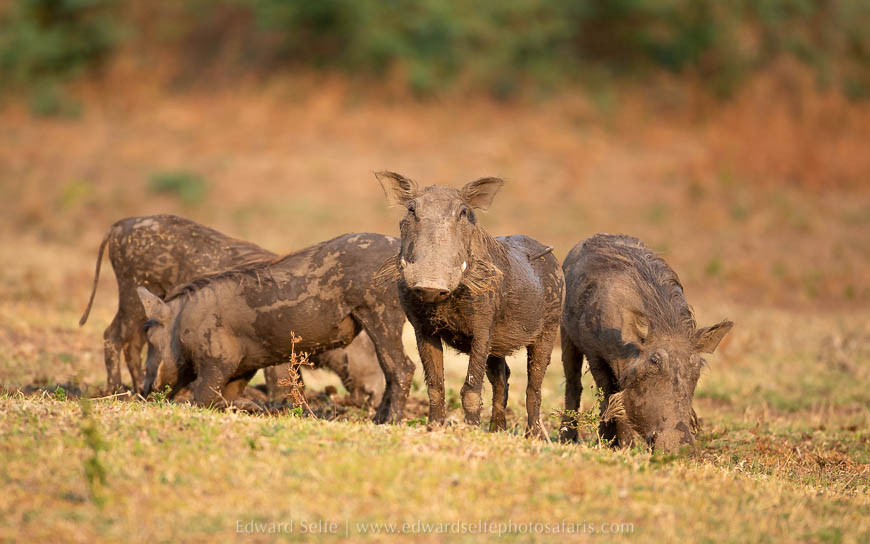
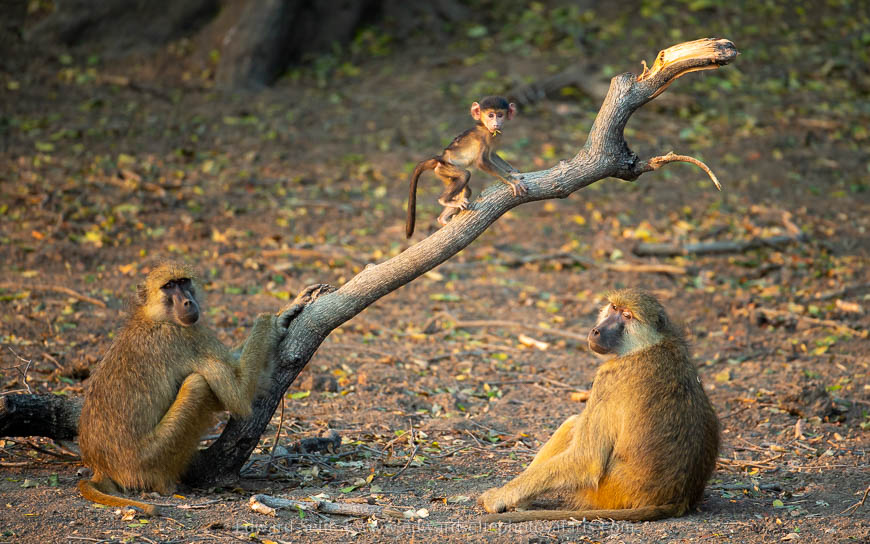
Being inside the National Park means that early departures take us straight into the prime areas; and so it was on our second day when we enjoyed elephants visiting the river in the golden light of 06.45 and lions resting on the sand nearby a few minutes later. As we were heading to coffee-break I spotted a southern ground hornbill with a lizard in its beak and we got great shots as it paraded the prize around.
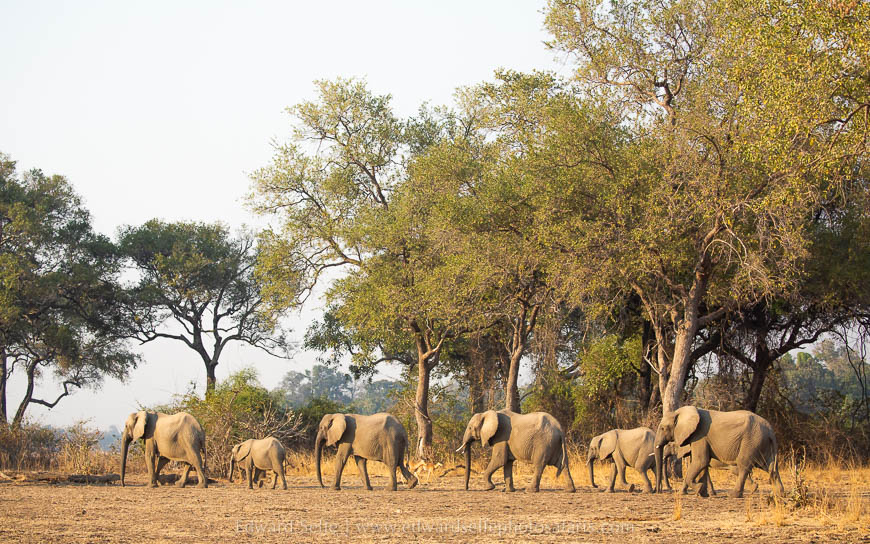
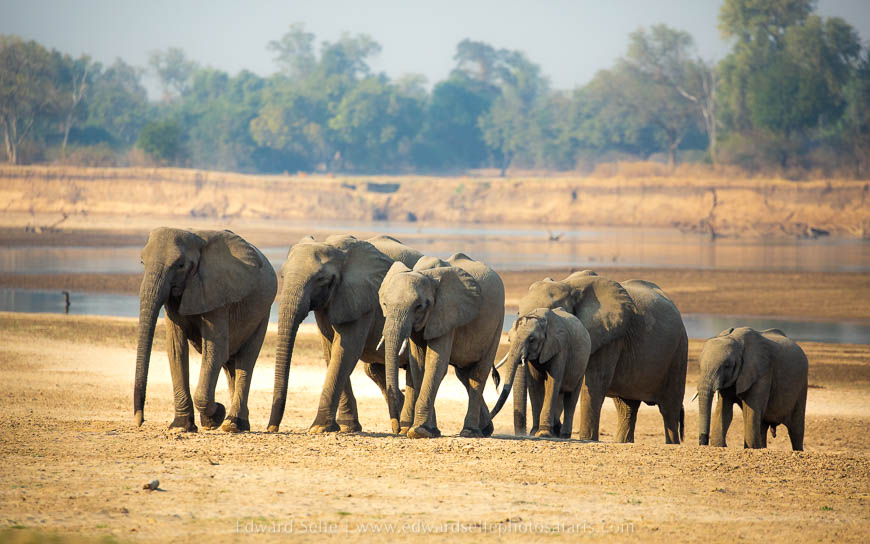
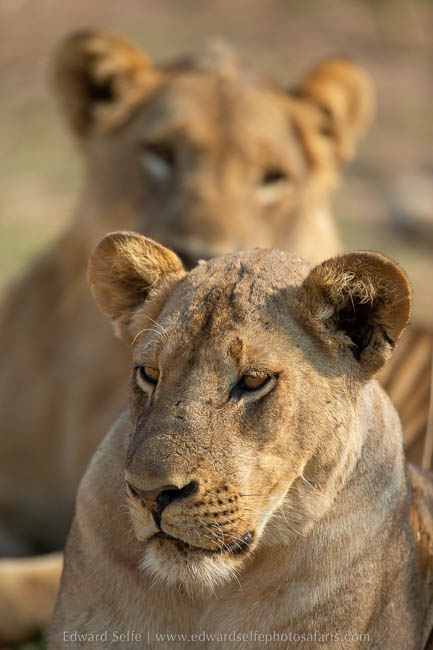
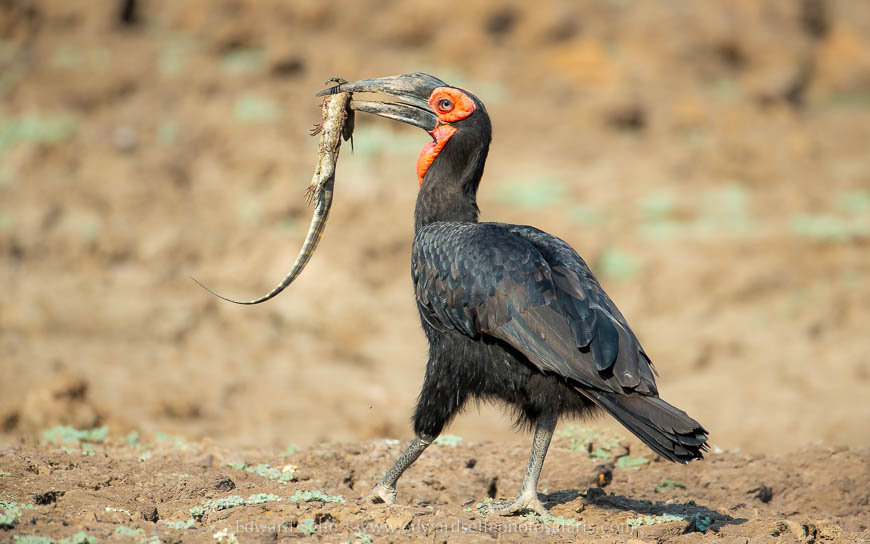
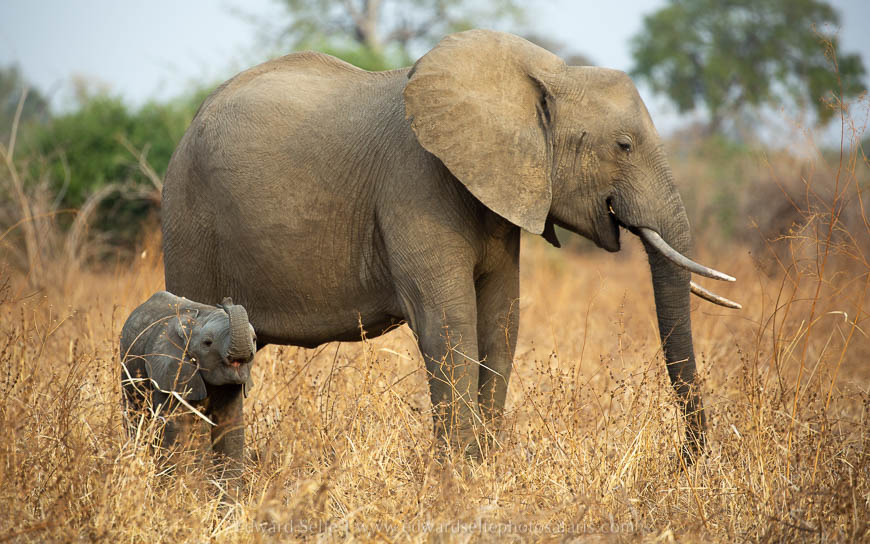
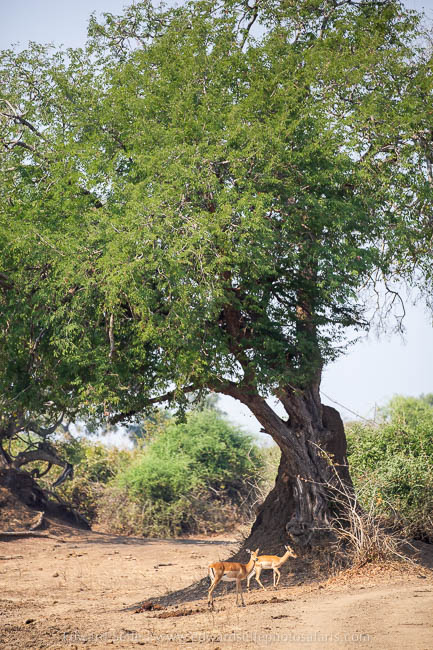
I also love to take wider shots to show the stunning environments of Luangwa….
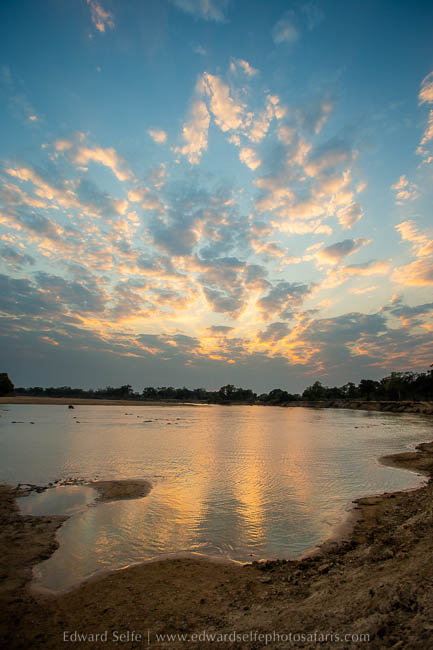
…and the sunsets are among the best anywhere!
We followed a hyaena who was moving fast early the following morning and she led us towards a gully where Chipadzuwa was hiding, waiting to hunt antelope. The hyaena actually walked past the leopard fortunately, but we enjoyed a great morning watching how she hunts and hoping that we could watch a hunt from a distance and not impact the outcome either way.
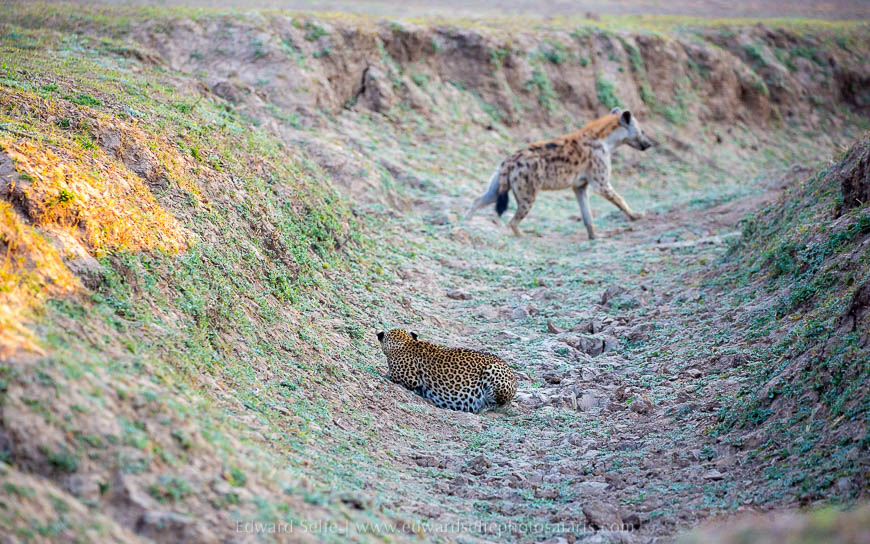
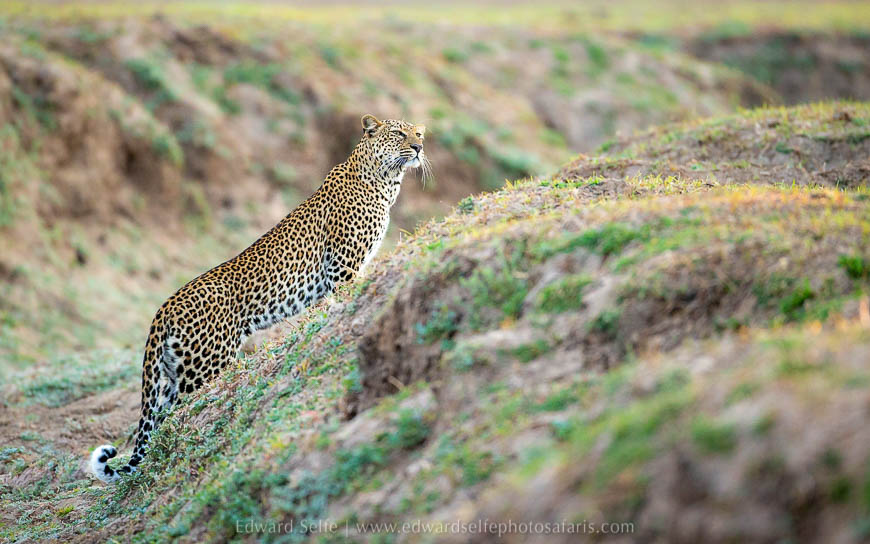
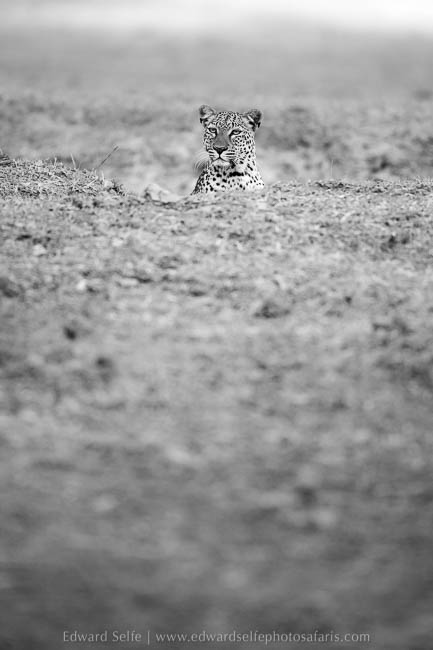
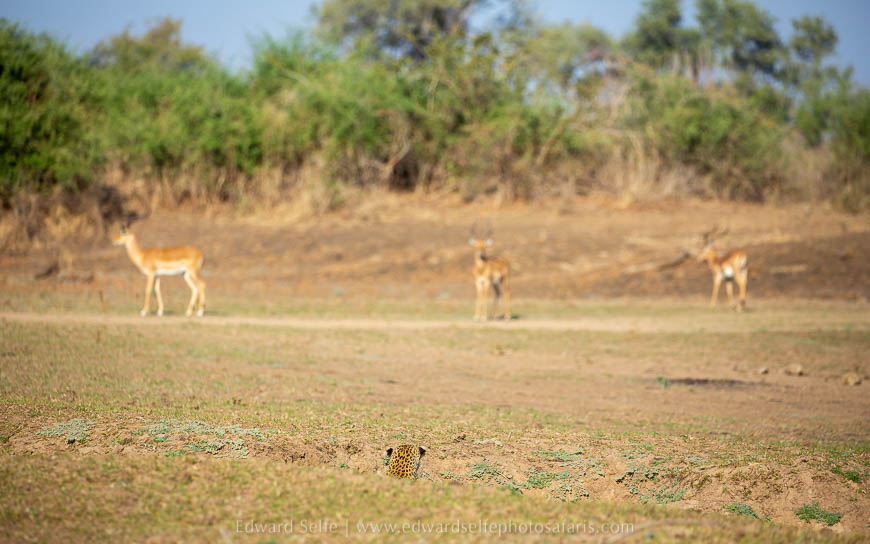
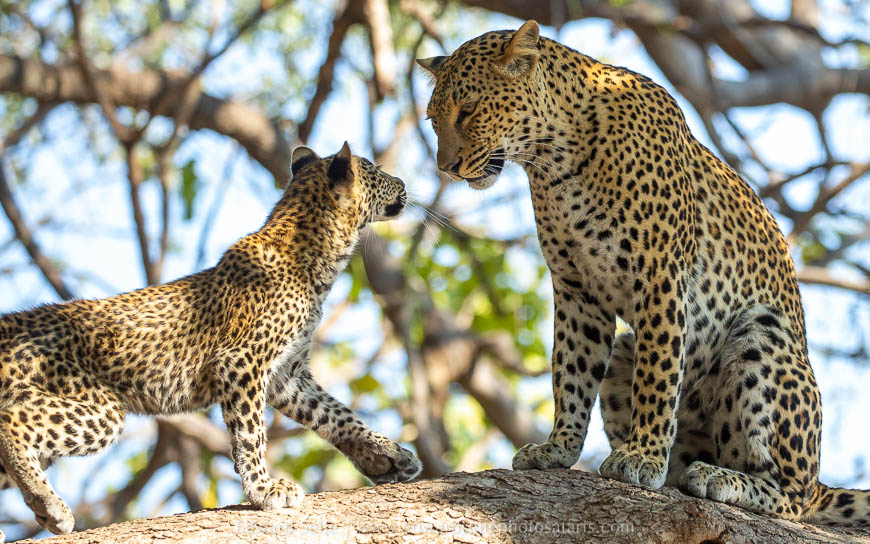
Eventually, after several failed hunting attempts, the female jumped into a tree, called her cub and we watched as they reunited and groomed each other, playing on the branch and then in the bushes below!
If there was a quiet afternoon on this trip, it was this one until, close to sunset, Chipadzuwa appeared again and gave us some superb photos in that late evening sun.
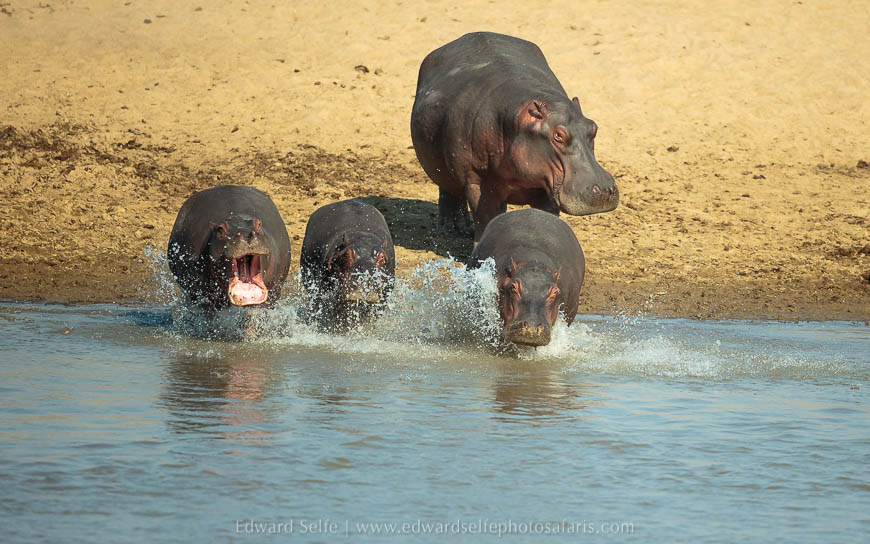
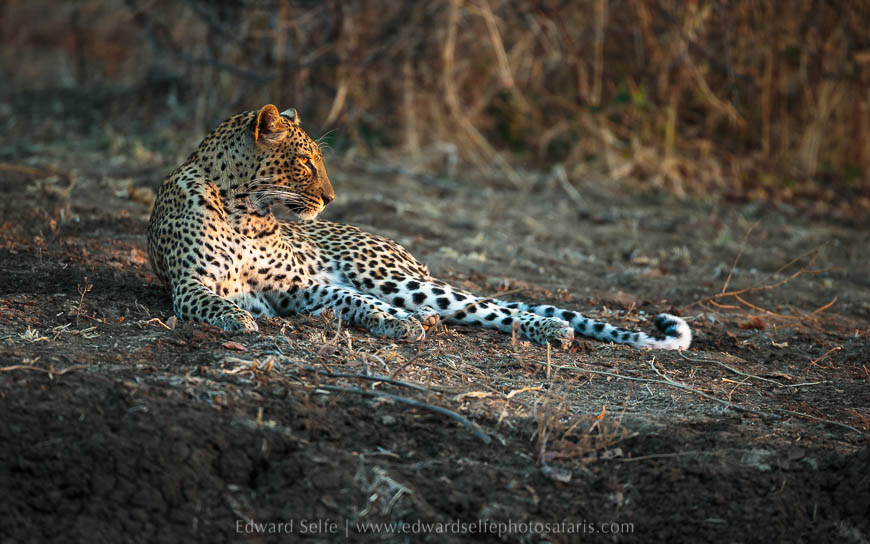
Chips went back to to gully and started hunting again, but she didn’t know that the Mwamba Pride were resting nearby (we had seen them earlier but they were totally hidden in long grass). We had all the lights off, but we heard that she jumped up and caught an impala from the edge of the gully, but was immediately overcome by the 12 lions who were nearby. It was heart-in-the-mouth for a moment, as the lions would readily kill the leopard, but we saw her escape out of the side of the gully and the lions were quickly distracted by the need to feed before the impala was finished off by the rest of the pride! The scene was quite something and is best illustrated by this video:
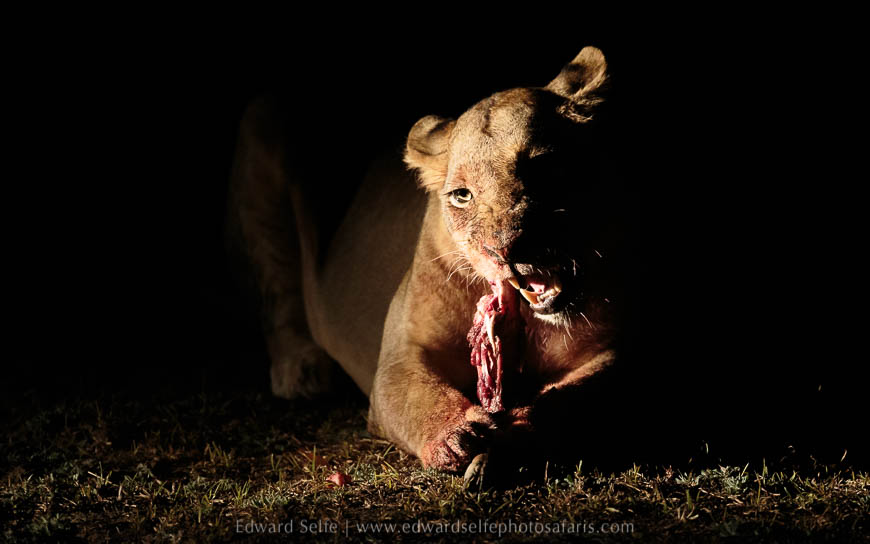
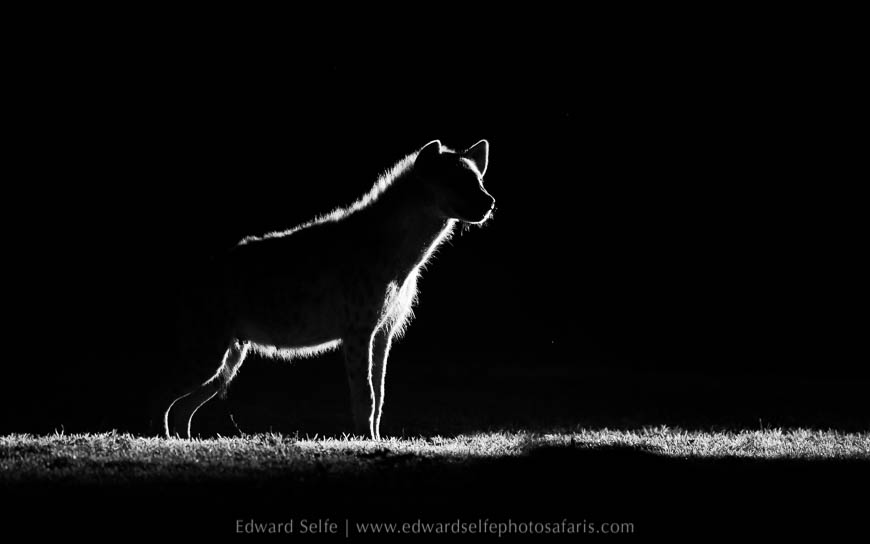
The photo opportunities in the aftermath of the kill were great. We shared the sighting with a few other vehicles so we could backlight, sidelight and work with each other’s angles to create interesting images.
Thereafter, sightings only came faster and faster. We decided to head to the wonderful ebony grove the following morning, but couldn’t resist following lion calls into the back country. The male who was calling was off the road in an inaccessible place, but we did bump into this beautiful female leopard resting in a shallow channel. Luangwa really is the place for leopards.
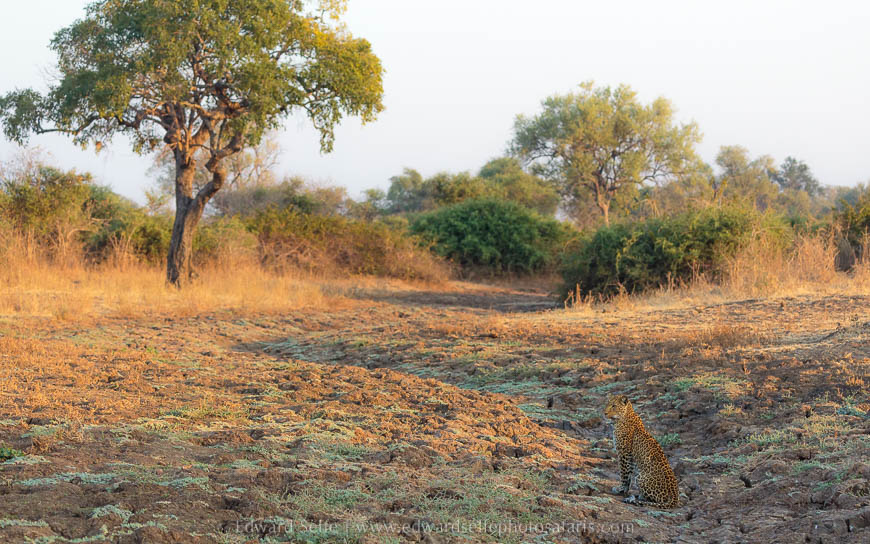
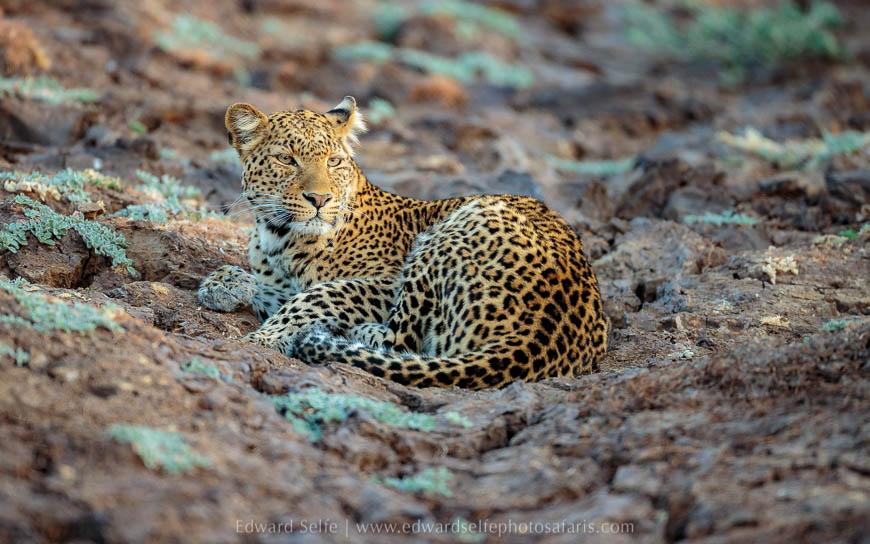
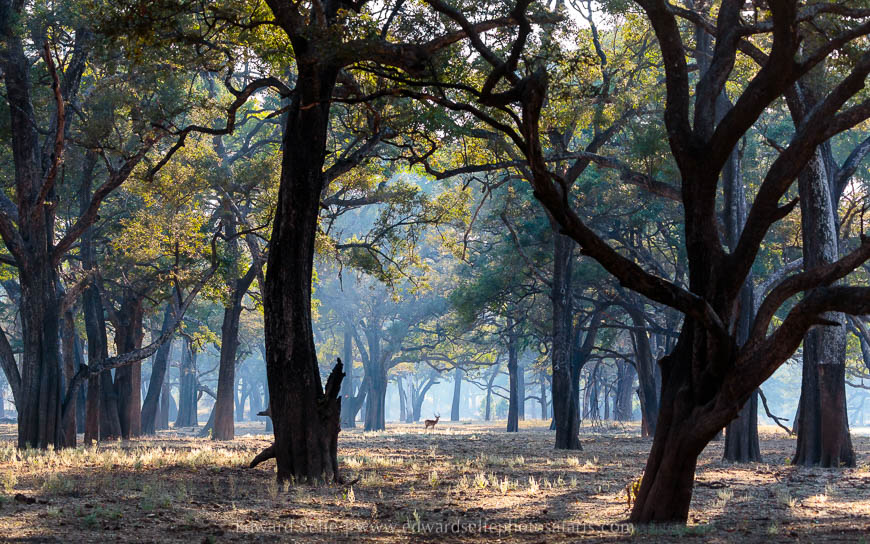
My favourite image of the trip came along that morning; love it when everything comes together.
We really wondered what else could happen in the final two days that could top all that we had seen. But of course, Luangwa delivered! That afternoon we set out with no real plan except to end up along the Mwamba stream where one of the vehicles coming from the airport had seen lion cubs in the morning. We took the long route, looking for the leopard from the morning, and taking in a wildebeest bull in the broken Mopane stumps. Our timing for the lions was perfect; as we arrived, the two females rose, the cubs followed, and they gave us an hour of the best lion viewing of this season.
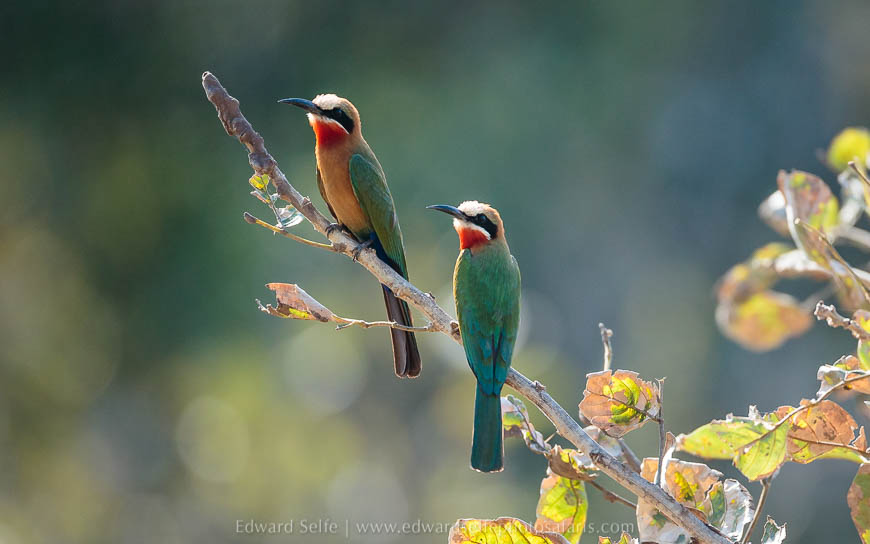
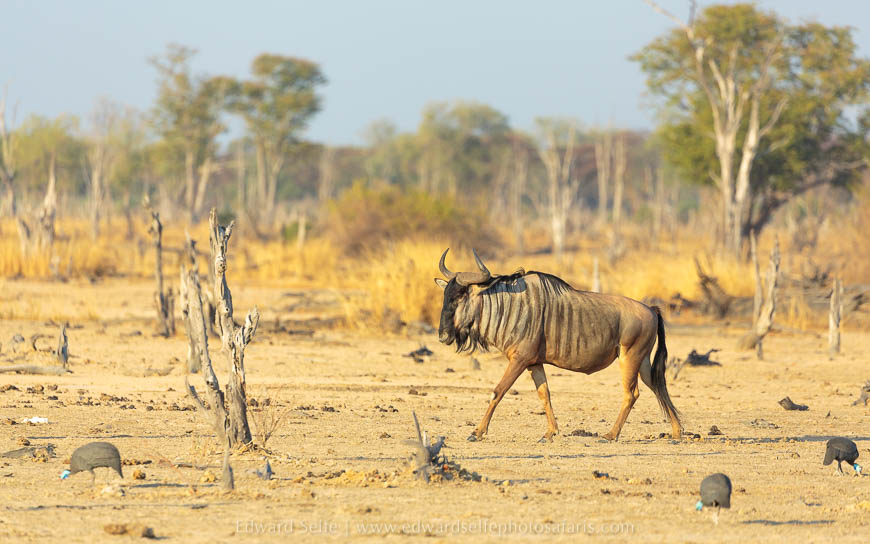
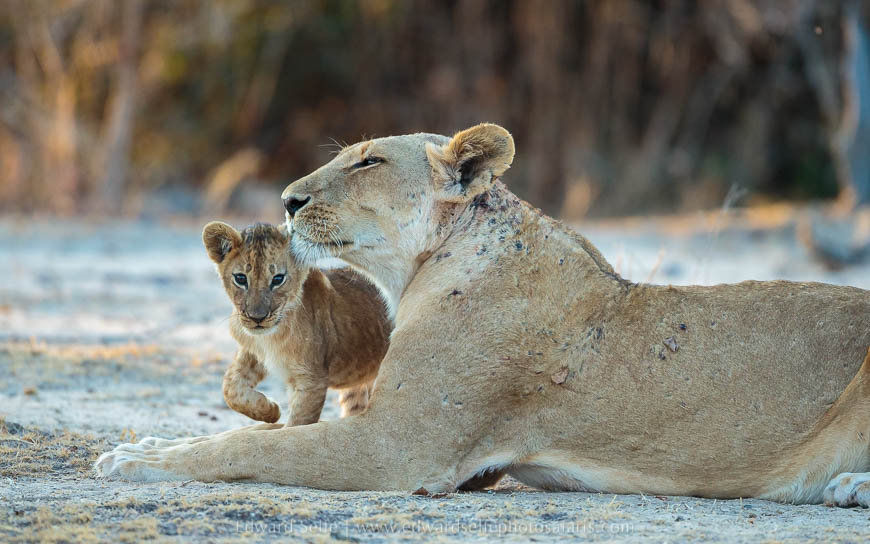
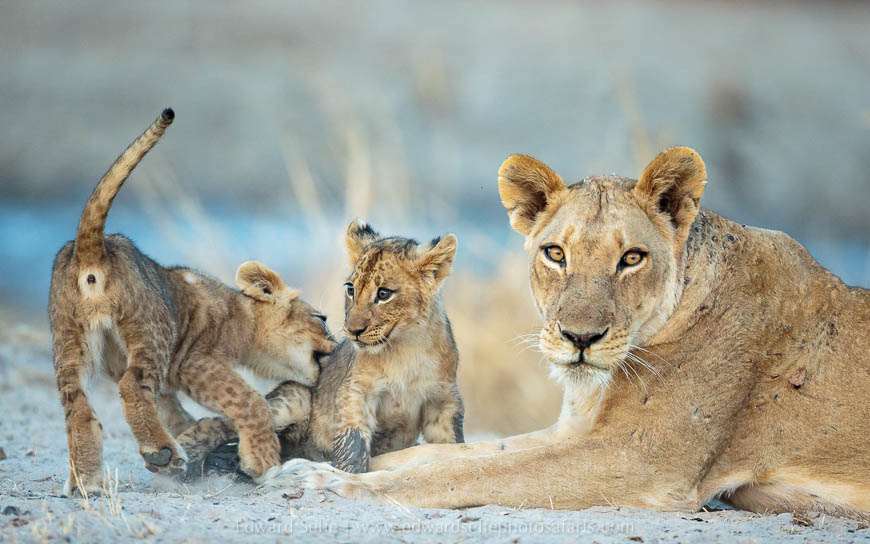
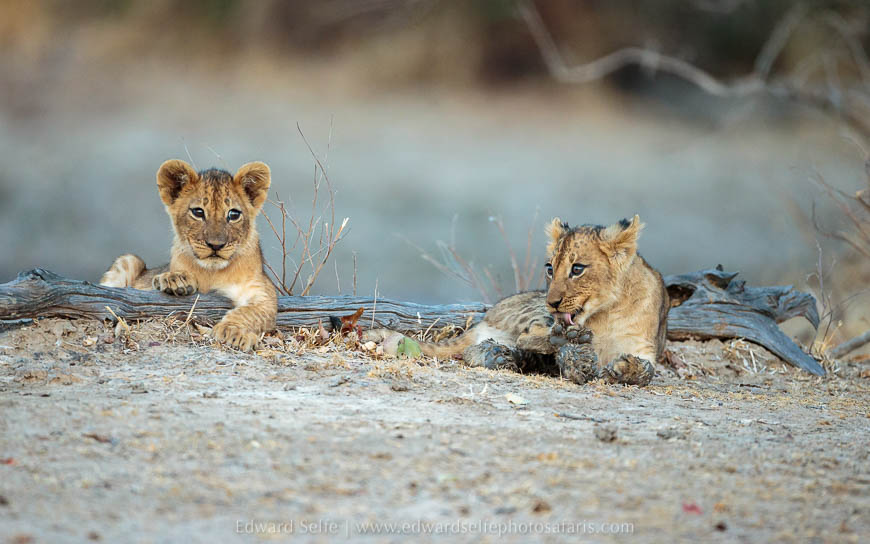
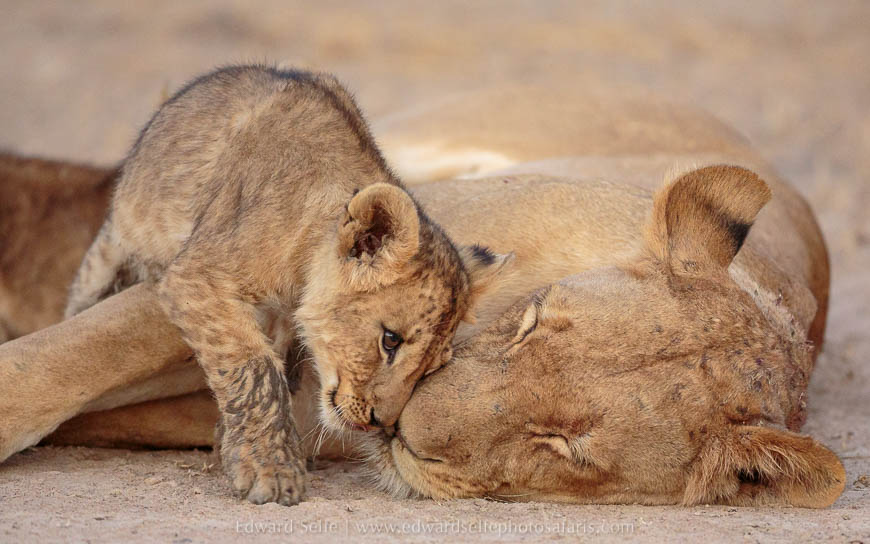
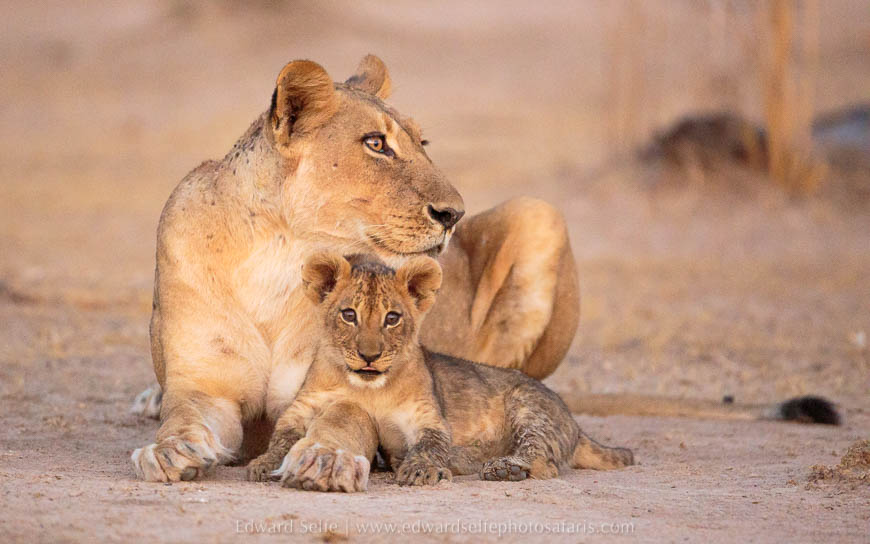
It had been a stunning afternoon. Just the type that photographers love. Lovely subjects in good light with lots of time to take shots, check the results, chat about how to improve them, and then reshoot. Lots of time just to watch too.
The final day was similarly eventful; I had hoped for one more sighting of Chips’ cub – named Chidwi – and we had more than we could have asked for. The cub was found in a thicket area and he was resting quietly on a branch. But he heard some rustling nearby and dropped down to investigate. We thought perhaps it was the mother, but it turned out to be a family of porcupines….and Chidwi quickly caught and killed one of the youngsters! At 5 months old, this was perhaps one of her first kills, though I have seen smaller cubs kill small birds at a younger age. She fed on the carcass, which at that age have no spines, and then dropped down and helped herself to another porcupine soon after! We were thrilled to see the cub doing well, but felt for the mother porcupine who’d lost two young in 10 minutes. Nature is tough.
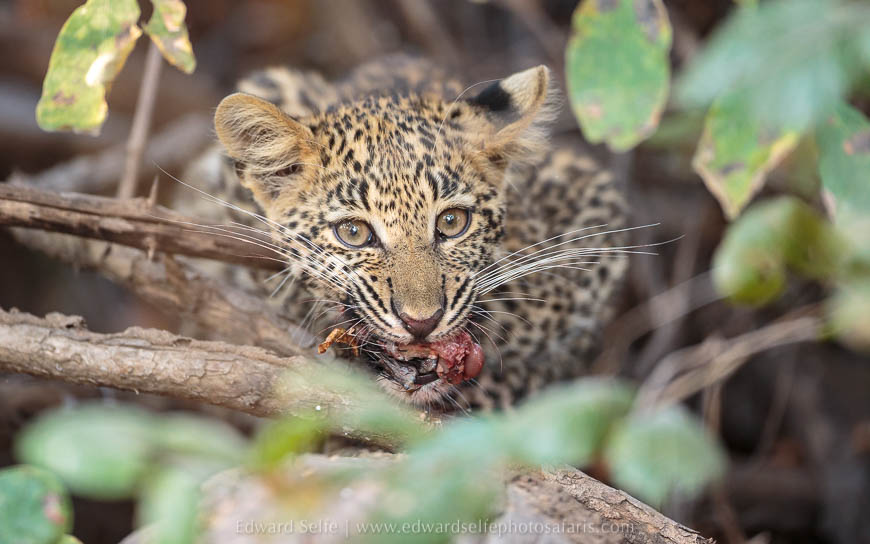
Leaving the youngster to feed on the remains, we moved off and searched the plains for the incredible red-billed quelea clouds – no luck this time – but we found stunning elephants that more than made up for it!
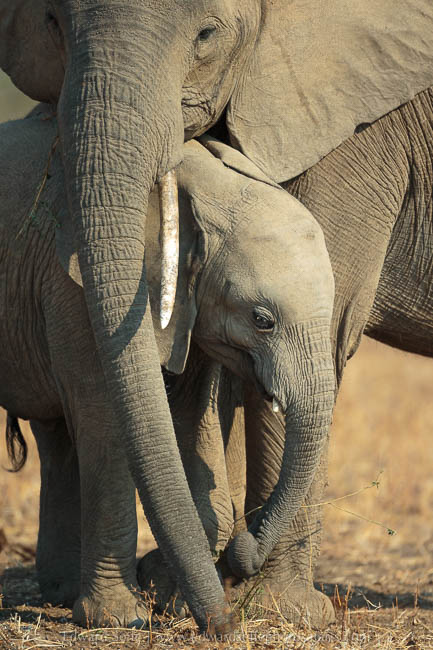
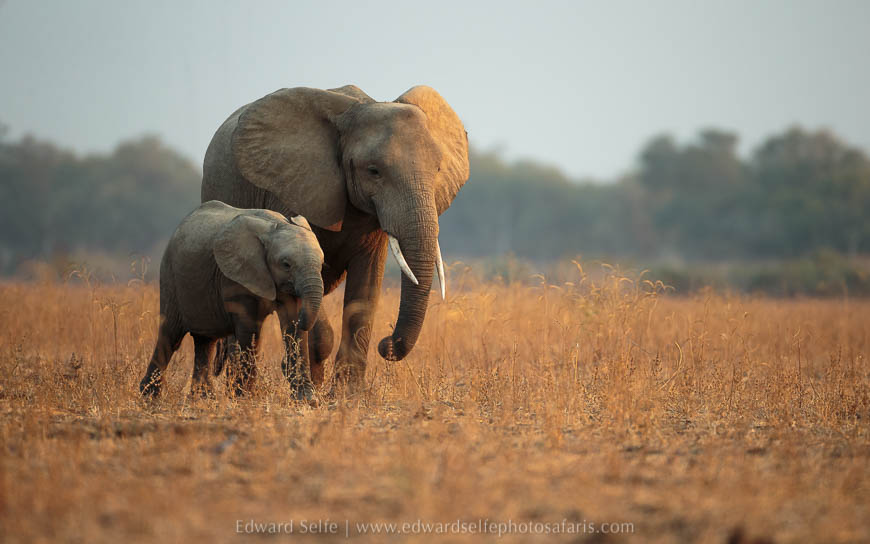
The final sighting of the trip, before setting off to the airport, was a finale with Chips and Chidwi, who momentarily jumped up on a fallen log. Mother was stressed as the area was surrounded by baboons, so we moved out and waited to see how they would deal with the threat. But in the end, they chose to stay in the thickets so we headed back to camp. It was a strange feeling to end such an action-packed safari; equally some sadness that it was all over, but also so much appreciation for the Nature of this area which thrills and astonishes me on a daily basis, even with the many years that I have spent exploring it.
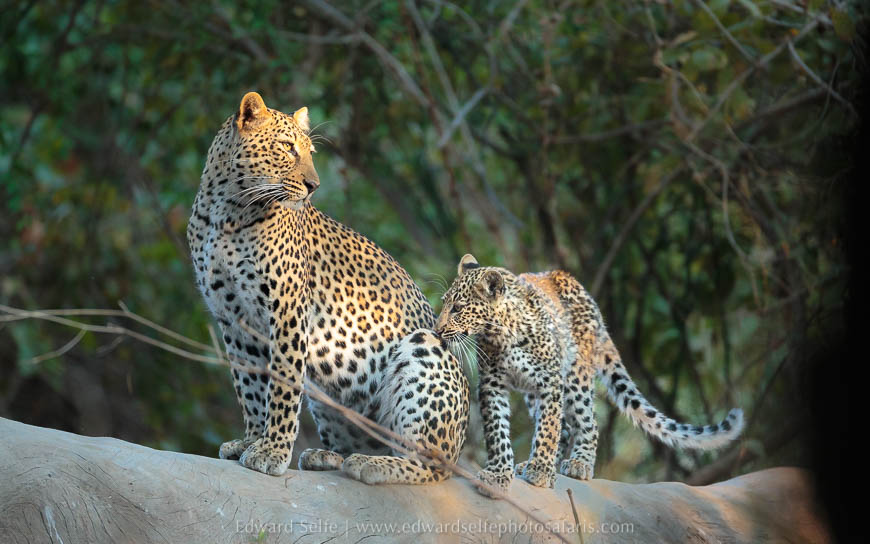
Thank you to the Ellingsen family for being the most amazing, patient, interested visitors and I’m thrilled that Nature shone favourably on your tour. I can’t wait to see the images and share reminiscences when we meet again.
Here’s to the next trip which will bring me back to Lion Camp once again. Thank you for following along, and please get in touch if you are interested in sharing some of Luangwa’s wonders with me.


